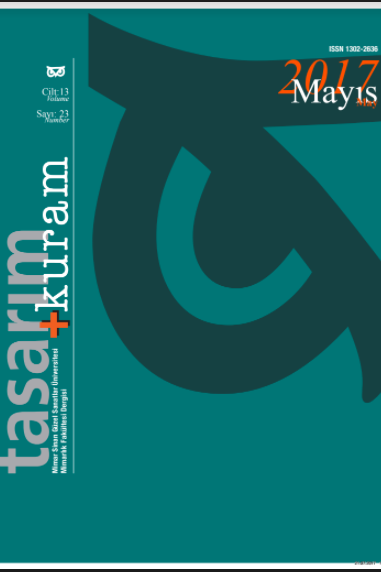Milestos’tan İstanbul’a Liman Kentlerinde Mimari Kimliğin Oluşumu
Makalede önce, liman-kent ilişkisinin, Antik Çağ’da en yoğun biçimde izlenebildiği İyonya ve Karya kıyı yerleşimleri ele alınmıştır. Bunların, uygun doğa koşulları sayesinde limanın yanına kurulduğu, böylece oluşan “liman-ticaret-din-kent” dörtlüsünün de sosyokültürel yapıyı biçimlendirdiği gözlenmektedir. Bununla bağlantılı olarak, İyonya bölgesinde, kesişen deniz ve kara ticaretinin, göçlerin, kolonileşmenin artzamanlı ve birbirleriyle bağlantılı olduğu; bunun da çevredeki uygarlıklarla teması sağladığı ve yeni düşünce biçimlerini doğurduğu saptanmaktadır. Daha sonra, liman-kent birlikteliğinin yarattığı ızgara (Hippodamos) kent dokusunun Miletos’da ortaya çıkış nedenleri, topografya, Doğu etkileri, kentin yeniden kurulma zorunluluğu, doğa filozoşarının etkilediği düşünce ortamının uygunluğu ve politikada eşitlik kavramı özetlenmiştir. Sonuç bölümünde, İyonya ve Karya liman kentlerindeki mimari kurgunun kentsel ve yapısal boyutlarına, Miletos örneğinde dikkat çekilerek, cografi konumun yanı sıra düşüncenin, inançların ve siyasal ortamın, kentin oluşumuna katkıları vurgulanmıştır.
Anahtar Kelimeler:
Batı Anadolu, Liman, Kent Dokusu, Hippodamos, Izgara Planı
The formation of the architectural identity in the harbour cities from Miletos to Istanbul
At the beginning of the article, we explore the “harbour-city” connection of the Ionianand Carian coastal urbanisation at its highest point in Antiquity. The suitable conditions of the environment caused a settling next to the harbour. We therefore examine the socio-cultural structure by the elements of “harbour + trade + religion +city” which resulted in this urbanisation.In relation with these remarks, we examine the interlacing of sea trade with land trade, the migration and colonisation of this particular period. Further on, we examine the “harbour-city” juxtaposition which resulted in the grid plan of Hippodamos in Miletos. We also explore the topography; the inşuences of the Eastern world; the necessity of reconstructing the city; the new ideas which were contributed by the “nature philosophers” and the political conception of equality. The conclusion part consists of the appraisal of the accumulated facts. By focusing on the example of Miletos, we investigated the architectural structure and formation of the Ionian and Carian harbour cities. We emphasize that, in addition to the advantages of a geographical location, political and religious beliefs also have a strong influence on the establishing of a city.
Keywords:
Western Anatolia, Harbour, Urban Fabric, Hippodamos, Grid Plan,
- ISSN: 1302-2636
- Başlangıç: 1999
- Yayıncı: Mimar Sinan Güzel Sanatlar Üniversitesi
